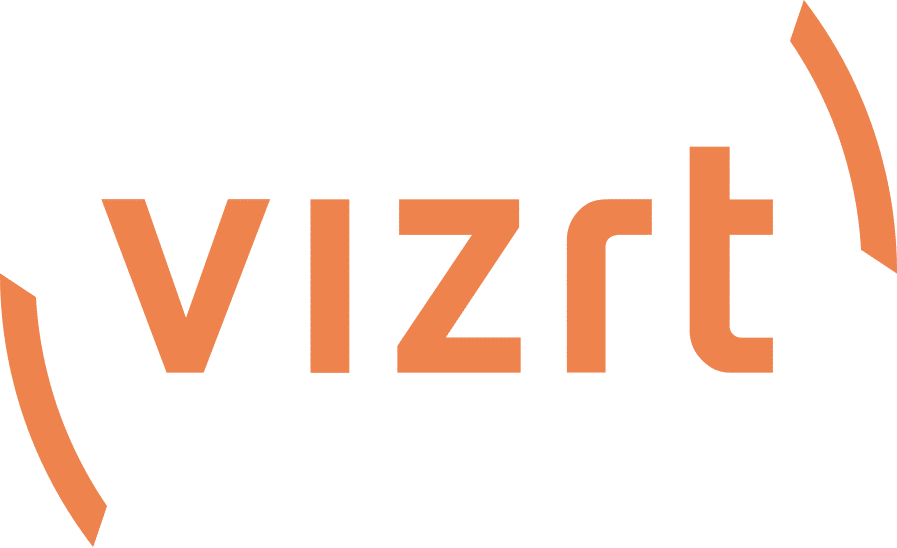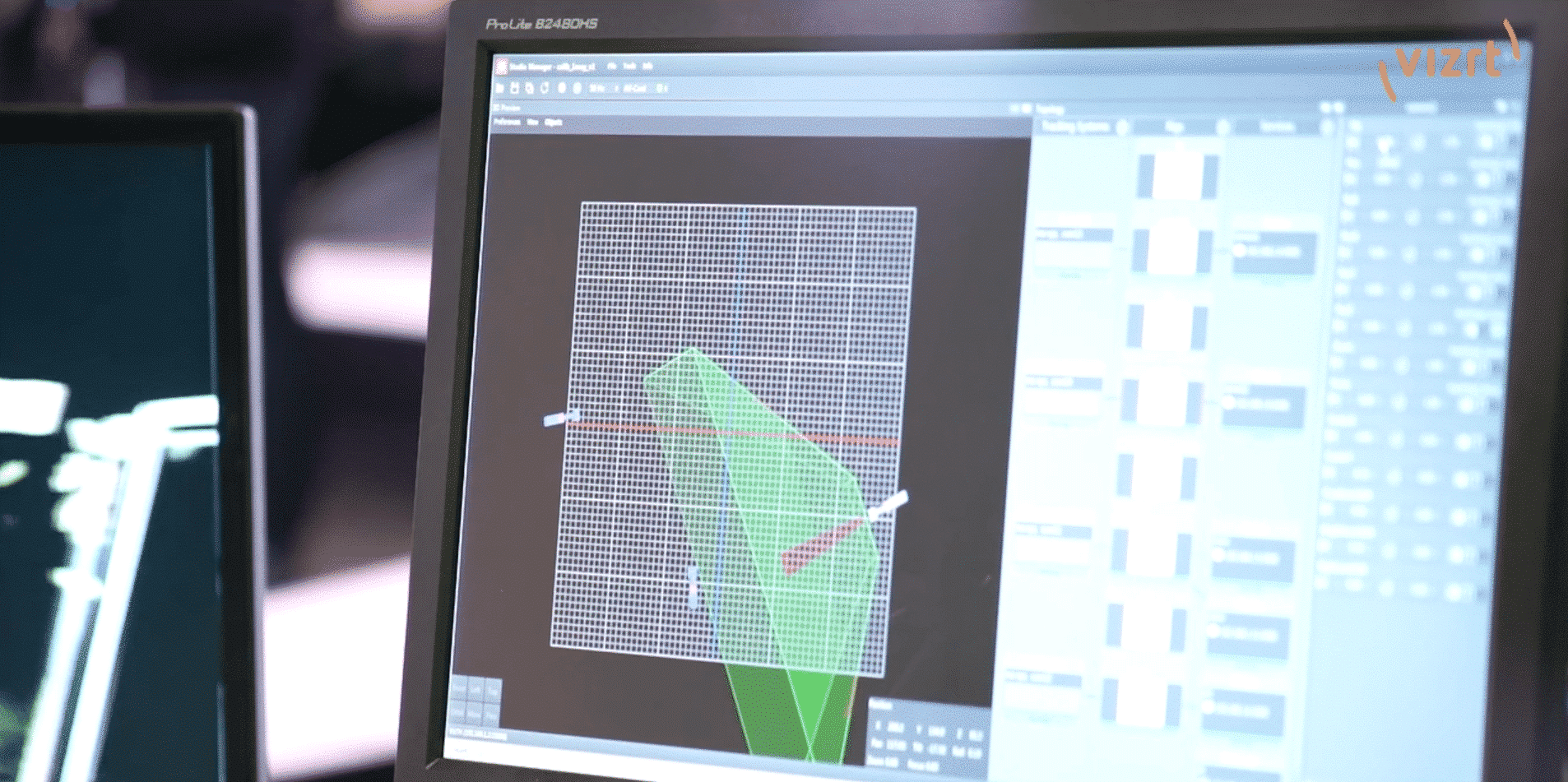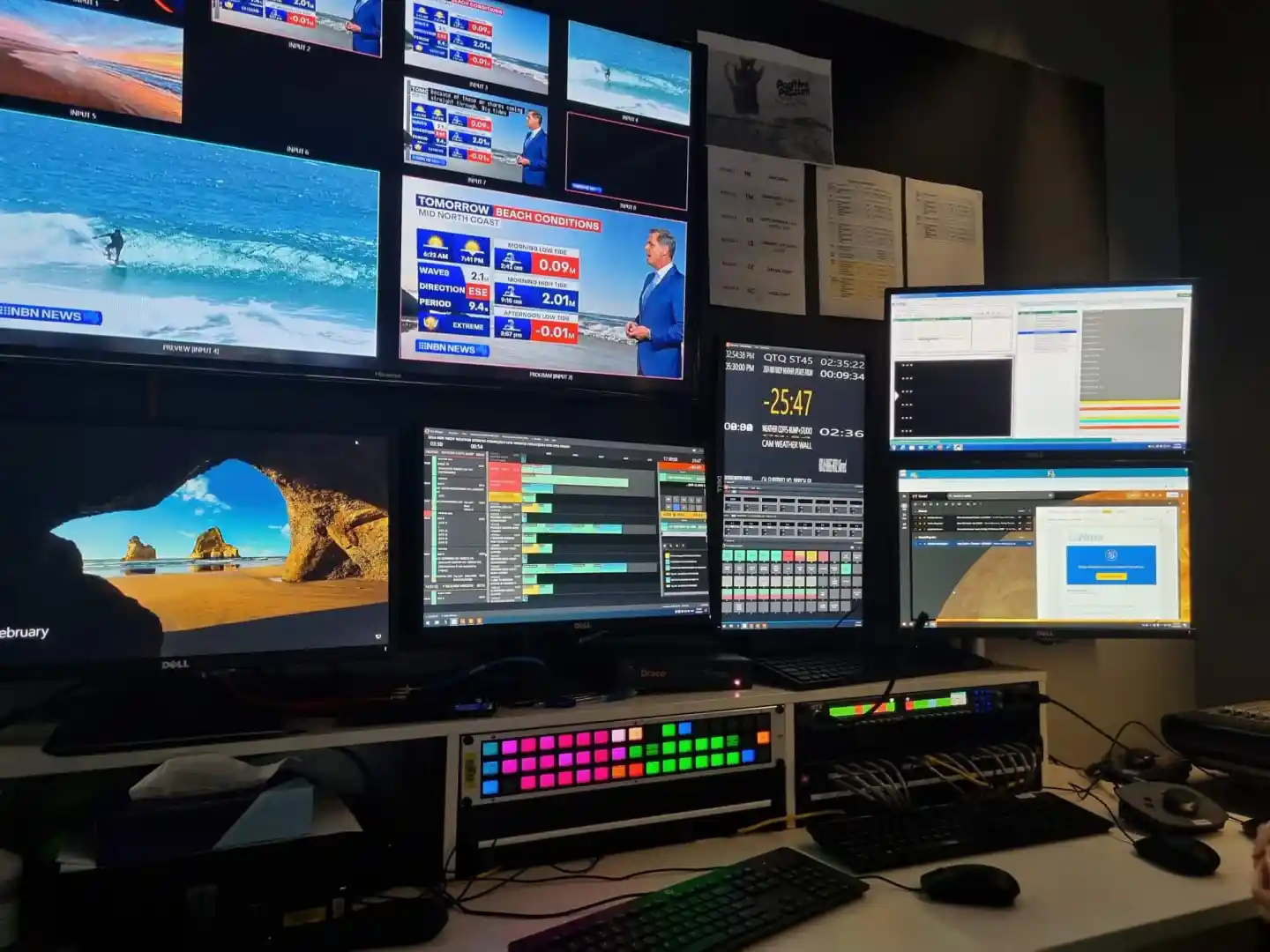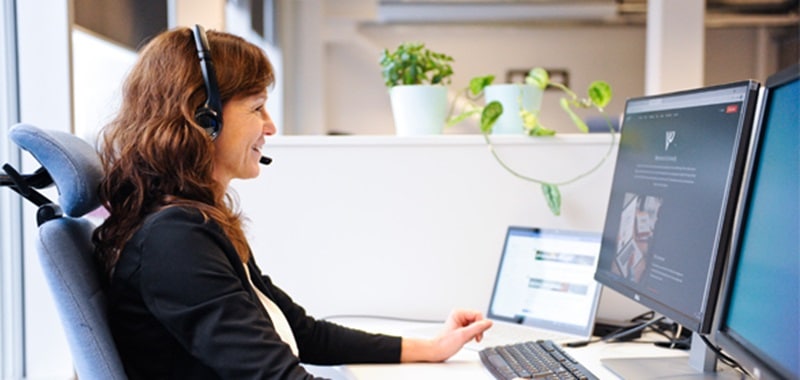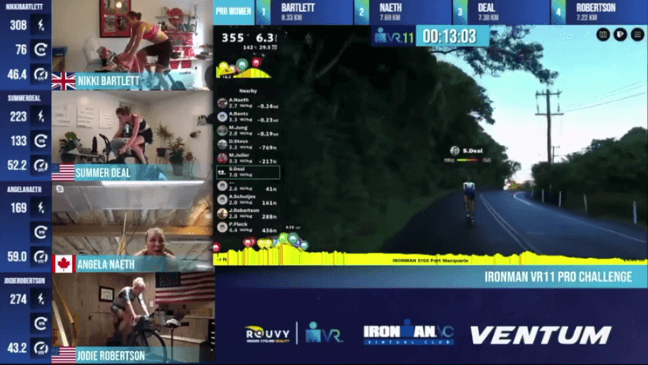On-air presenter Jeremy Vine presented an immersive look at the elections for the audience that provided viewers with highly accurate, up-to-the-minute political analysis. The technical challenge was to get the virtual set installed and set up for the program to be delivered.
Lenses on the cameras in the studio were precisely calibrated to ensure that the real world and virtual studio graphics would work in sync. The camera equipment used for the tracking system was assembled around 10 days before live elections broadcast to allow for calibration, with the remaining cameras added a few days later. This allowed for approximately four days of rehearsal leading up to various local newscasts.
For synchronizing the data from the tracking systems, the latest version of Viz Virtual Studio was used. Part of the system is Tracking Hub, which takes data from any tracking system and converts the data into a format that is easily read by Viz Engine. This allows multiple tracking systems to be used simultaneously during a live production.With Viz Virtual Studio you can also visualizing how the tracking data connects to the Viz Engines and configure the cameras and studio space.
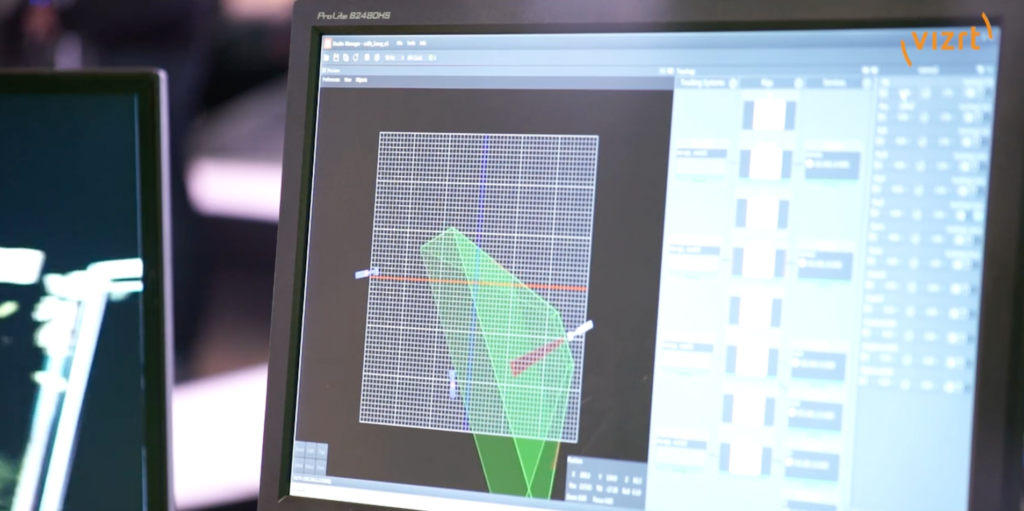
In the studio, two cameras on Vinten Quattro pedestals and a 30 foot techno crane were fitted with specialized Mo-Sys StarTracker VR optical camera tracking systems. The camera-mounted systems use an optical tracking system that gives users the freedom of movement in the studio using a handheld camera, pedestal or crane.
For the local election coverage, the StarTracker tracking system facilitated sweeping POV shots between each specific area of the studio. This gave the crew the ability to quickly and seamlessly move from the “real” world of the studio to the graphics world of the virtual set.
The camera position information was fed to five Viz Engine servers that provided background and key to enable the presenter to move realistically around a green screen environment and become immersed in up-to-date graphics. Two on-set projectors provided information in the green screen area for Vine so he could directly see the graphics as well as on program monitors.
Another technology used to great effect by the BBC’s election coverage was a 4.8 meter wide by 2 meter high touch screen mounted on set that boasts a 2.5mm dot pitch LED screen with a Viz Engine real-time graphics rendering server to bring the graphics to life.
The combination of virtual set, touch screen, video wall and the physical studio created a unique presentation that kept viewers informed with the latest election results.
